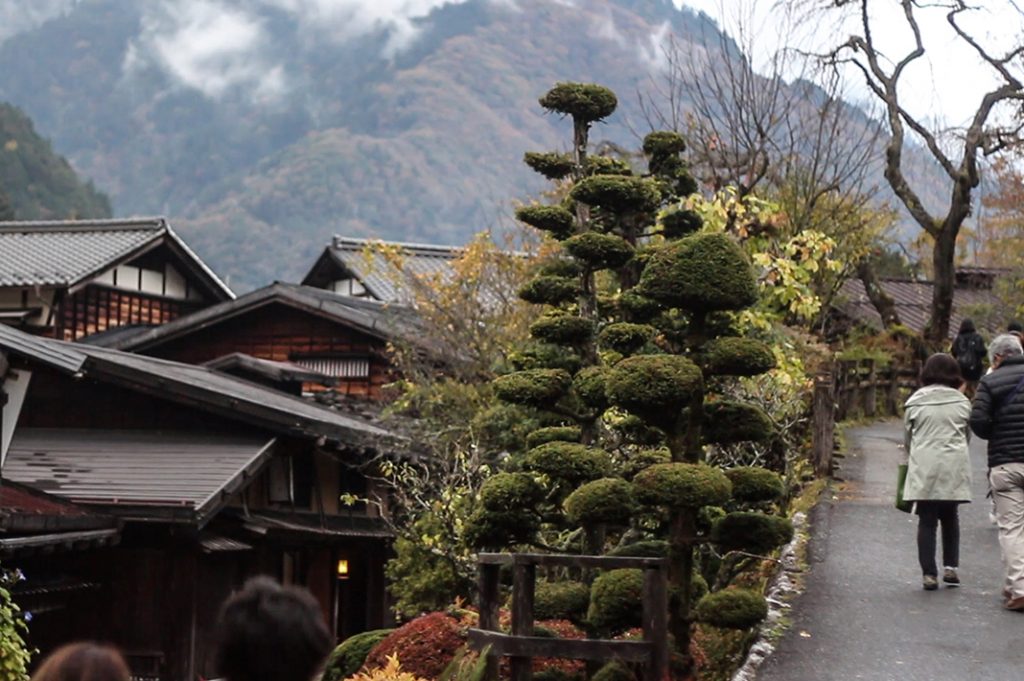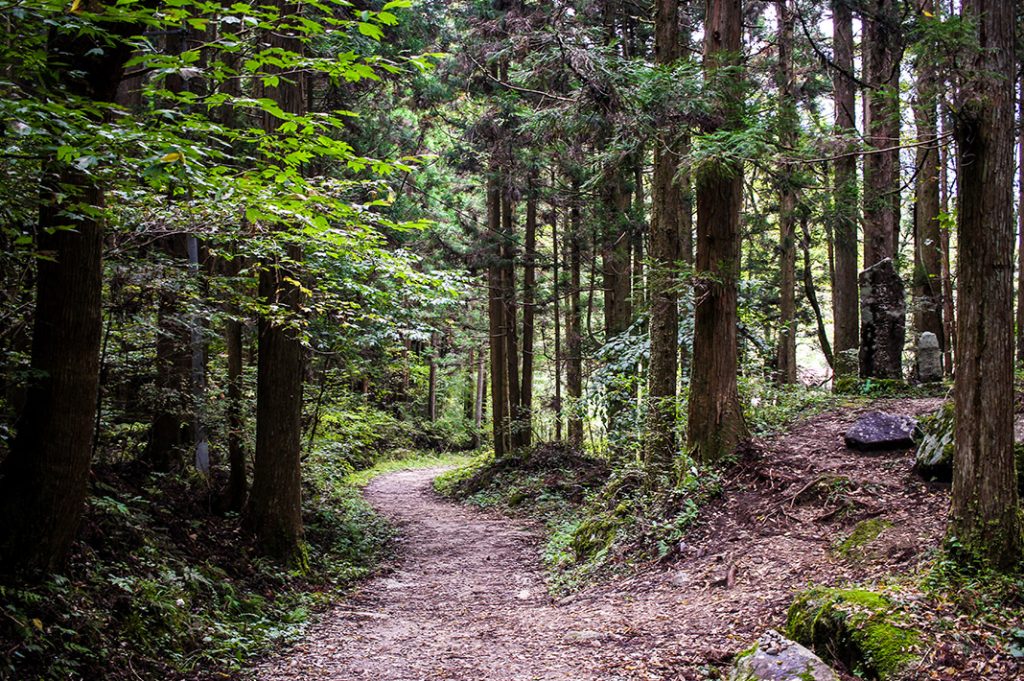
~~
Picture this: you’re a feudal lord (daimyo) with land, money and power within your community. You live hundreds of kilometres from the Nation’s capital and presumably fly under the radar. In your opinion, they’ve been in charge long enough and you could do a better job.
A little planning, a little muscle—they’d never see an uprising coming. Your scheming comes to a halt when your family are suddenly taken to live in said capital in an expensive home you must pay for. You’re also required to visit them regularly…on foot, at your own expense, with a showy entourage and at the whim of the rulers.
Suddenly time and money are a distant memory and you join the many others trekking the Nakasendo Trail.
Looking back
Today, I’m standing in the same spot as countless travellers of yesteryear, though I couldn’t be further away from that life. I’m off the beaten track and deep in the mountains in a quaint storybook town called Magome. The buildings here retain the facade of a bygone era, but contain businesses geared toward the modern-day traveller.

As I hold my skinny latte, bought from the surprisingly hip Hillbilly Coffee, I close my eyes and try to picture the ancient feudal lords and their ostentatious entourage marching by on their way to the capital.
The route they’re taking is the Nakasendo Trail (中山道 Central Mountain Route) which once spanned the mountainous 540km between Kyoto and Tokyo. This was one of the five centrally controlled highways of the Edo Period (1603-1868) in a time when travelling was done on foot or by horse. These long routes all connected the capital of Edo (Tokyo) to distant prefectures and were travelled by all sorts; feudal lords (i.e. daimyo), royalty, samurai, priests, poets, merchants and commoners like me.

(You can read the rest of the article at this link. This article was first published by Team JJ on July 28, 2019. Check here for deeper and unique insights into visiting Japan, including wellness, travel, cuisine and more. Find us on Instagram and on Facebook.)
Author: Team JJ






